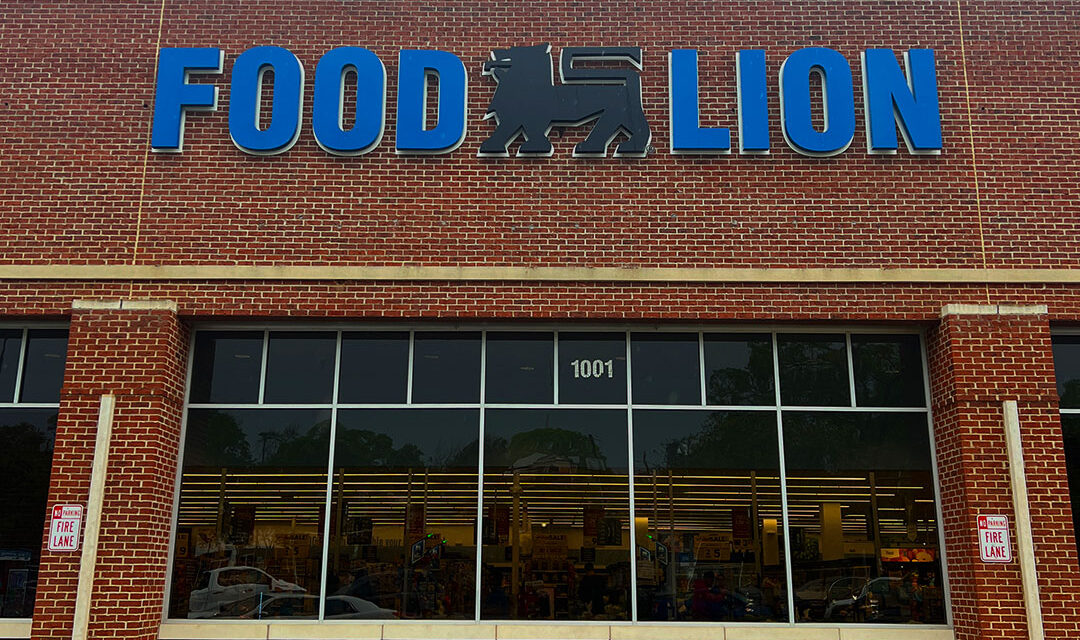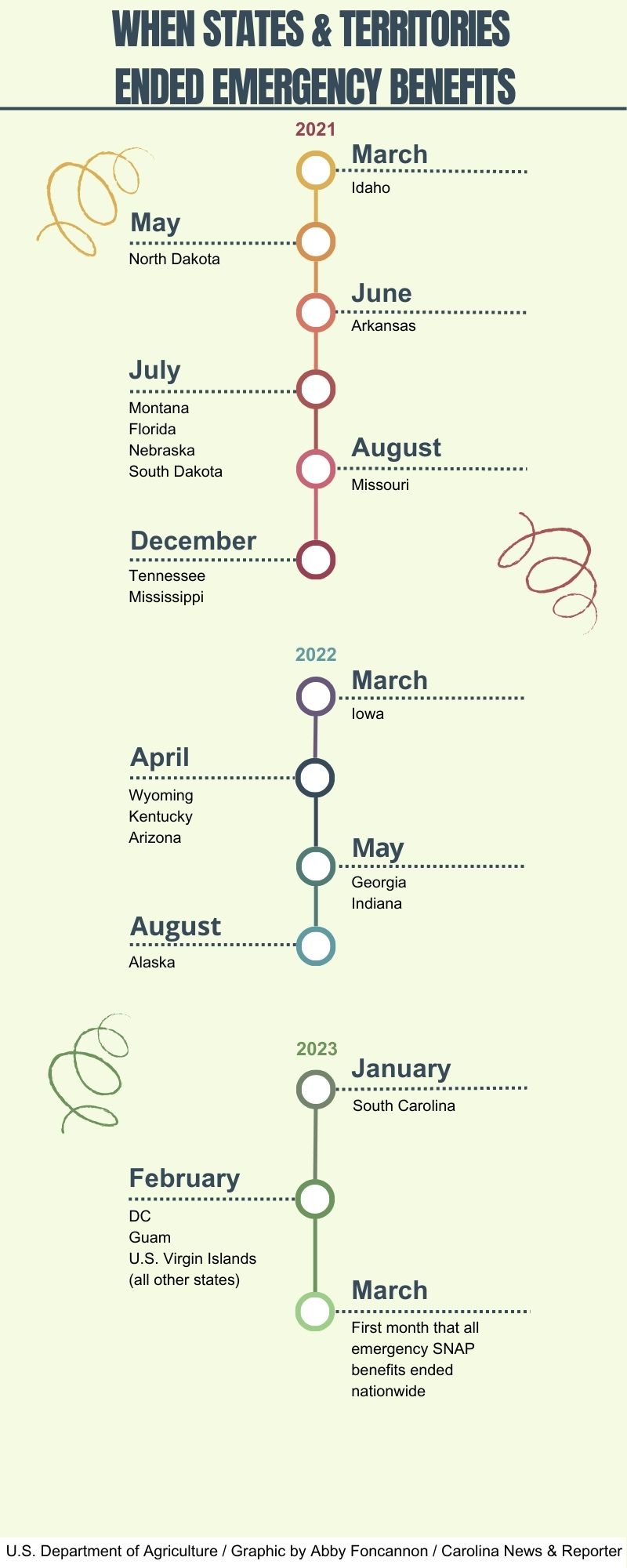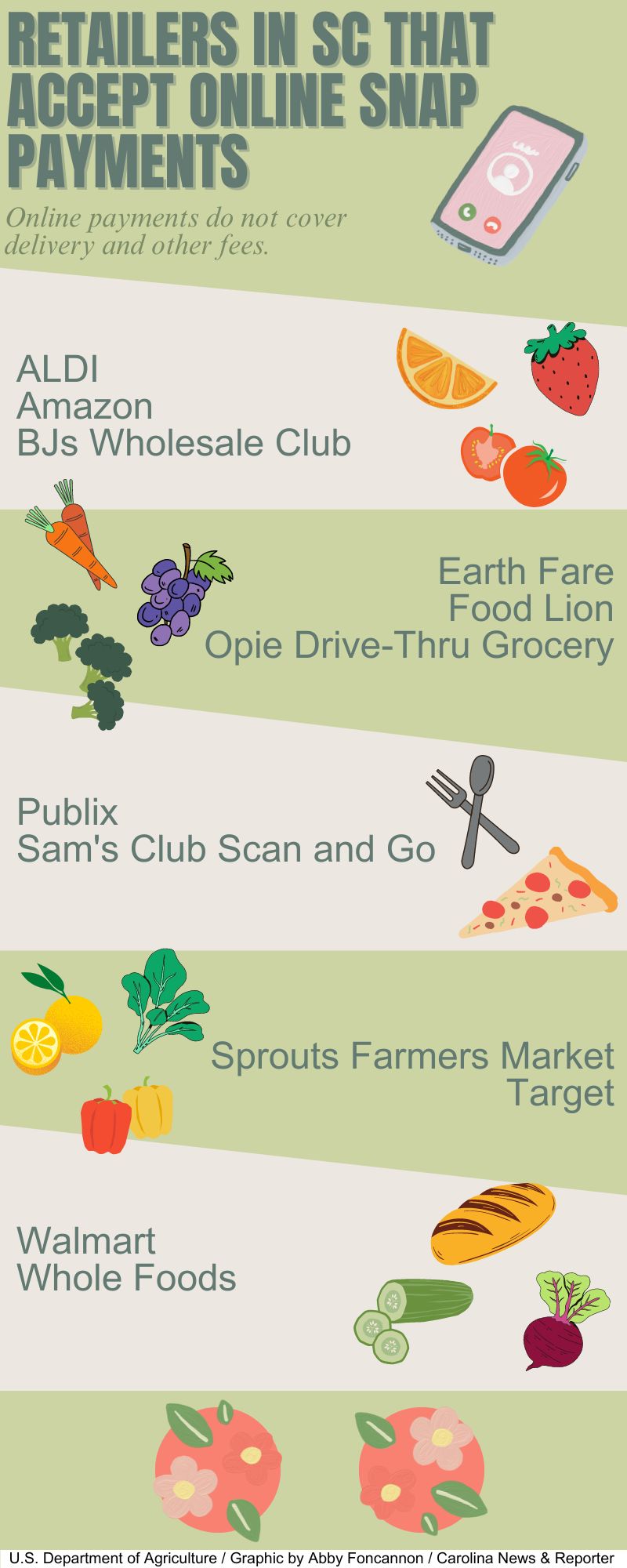Food Lion is one of several food retailers that accept online SNAP payments in South Carolina. (Photo by Abby Foncannon)
The boost to SNAP benefits during COVID is ending nationwide.
By the end of March, all households using Supplemental Nutrition Assistance Program, formerly known as “food stamps,” will have their benefits returned to pre-COVID amounts.
But, with inflation causing food costs to rise dramatically, there are worries that a hunger crisis will take place in many households.
Food insecurity is the lack of consistent access to enough food for every person in a household and is used to determine how many people can’t afford food, according to the nonprofit Feeding America.
SNAP is a federal program that provides nutrition benefits to low-income individuals and families. The benefits are used at stores across the country to purchase food and other necessary nutritional items, such as baby formula, according to the U.S. Department of Agriculture.
Congress authorized the temporary monetary supplements to assist low-income individuals and families dealing with hardships during the pandemic.
SNAP allotment amounts vary depending on household size, income, countable household expenses and other federal eligibility requirements, according to the S.C. Department of Social Services.
More than 41 million Americans, out of 331.9 million, receive food-buying benefits through SNAP. So, around 12.35% of Americans experience food instability.
Here are some frequently asked questions:
How many South Carolinians receive SNAP benefits?
Around 308,000 households receive federal food assistance. That’s more than 626,000 people.
When did emergency allotment benefits end in South Carolina?
It was announced in December 2022 that households would no longer be receiving supplements.
The benefits ended on Jan. 31, 2023.
South Carolina was one of 18 states that ended emergency benefits before the nationwide cutoff.
How much were benefits reduced?
Payments to households added around $95 in emergency benefits per person before the cut. The household allotments averaged about $515 a month.
The recent reduction was about $83 per month per person. That meant the household got to keep an average of $12.
Even with the $12 bump, the cost of food and groceries has increased because of inflation and supply chain issues.
The reduction has emphasized worries that a large majority of recipients will not be able to afford basic nutrition.
Current SNAP benefits will provide about $250 per month per household, or about $6 per day per person.
Why were benefits reduced?
The additional food assistance allotment ended as part of the $1.7 trillion omnibus COVID spending bill that was revoked on Dec. 29, 2022.
Resources
Further questions about SNAP benefits can be directed to AskUSDA.
FNS nutrition programs can be found here.




